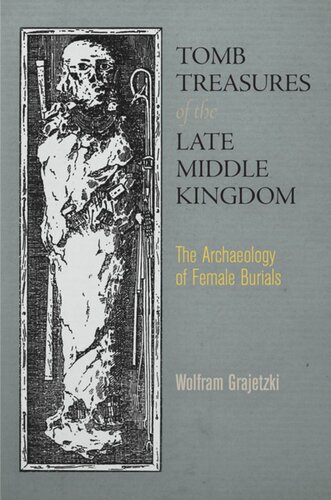

Most ebook files are in PDF format, so you can easily read them using various software such as Foxit Reader or directly on the Google Chrome browser.
Some ebook files are released by publishers in other formats such as .awz, .mobi, .epub, .fb2, etc. You may need to install specific software to read these formats on mobile/PC, such as Calibre.
Please read the tutorial at this link: https://ebookbell.com/faq
We offer FREE conversion to the popular formats you request; however, this may take some time. Therefore, right after payment, please email us, and we will try to provide the service as quickly as possible.
For some exceptional file formats or broken links (if any), please refrain from opening any disputes. Instead, email us first, and we will try to assist within a maximum of 6 hours.
EbookBell Team

4.1
100 reviewsDuring the late Middle Kingdom (about 1850-1700 B.C.E.), ancient Egyptian women of high standing were interred with lavish ornamentation and carefully gathered possessions. Buried near the pyramids of kings, women with royal connections or great wealth and status were surrounded by fine pottery and vessels for sacred oils, bedecked with gold and precious stones, and honored with royal insignia and marks of Osiris. Their funerary possessions include jewelry imported from other ancient lands and gold-handled daggers and claspless jewelry made only to be worn in the tomb.
Extensively illustrated with archival images and the author's own drawings, Tomb Treasures of the Late Middle Kingdom describes and compares the opulent tombs of eminent and royal women. In addition to the ornaments, many of which are considered masterpieces of Middle Kingdom craft, Egyptologist Wolfram Grajetzki examines the numerous grave goods, artifacts of daily life, and markers of social status that were also placed in tombs, presenting a more complete picture of funerary customs in this period. By considering celebrated examples of female burials together for the first time, Tomb Treasures of the Late Middle Kingdom sheds new light on the role and status of women in the royal court and explores how the gendered identity of those women was preserved in the grave.